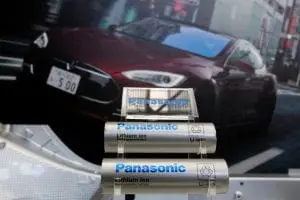Around the world, pollution rules in inner city areas are tightening.
Paris, for instance, last year introduced an 8am to 8pm Monday to Friday ban on pre-2006 diesel vehicles. (As well as on motorbikes registered before July 1 2004).
London has its ‘Ultra-Low Emission Zone’ (ULEZ) where older, more polluting, vehicles are hit with extra charges on top of the congestion tax that is levied for travelling within the zone.
On top of that, London no longer offers new licenses to taxi cabs that run on diesel. In Madrid (Spain), petrol vehicles registered before 2000 (and diesel ones registered before 2006) are banned from the 272 hectare central Madrid area.
And these cities are not alone – more and more cities are introducing bans and restrictions on internal combustion engine (ICE) vehicles.
Obviously, full battery-electric vehicles (BEVs) are exempt from these bans, and hybrid electric vehicles (HEVs) are not – as their ICE motor is always running.
But where do plug-in hybrid electric vehicles (PHEVs) fit in? PHEVs can run on their ICE motor alone, in combination with their electric motor, or electric only.
As pollution bans tighten, PHEVs are becoming lumped in with the ICE vehicles and cop the bans or additional charges too.
However, some new developments may mean that for the purposes of these bans and restrictions, PHEVs can be regarded as BEVs.
This is because a new crop of PHEVs from BMW and Ford will automatically switch to ‘electric only’ when driving in predefined, geo-fenced regions areas such as congestion and low emission zones.
In the case of BMW, this function has just been enabled for all new BMW PHEVs (as well as compatible recent models via an over-the-air update) when driving in London and Birmingham in the UK. A roll-out of the system will then occur across a series of European cities.
In the case of Ford, the function has been added to the PHEV Transit van available in the UK. It also works via live location data to ensure it automatically switches to electric-only mode when entering a defined low emissions region.
In order to avoid the risk of wrongful fines and penalties, it also records information about electric-only operation within the defined area which can be shared with authorities to confirm compliance with low-emission zone regulations.
Sadly, here in Australia we have poor fuel quality standards, outdated fuel economy standards and no plan for a move away from fossil fuels and their associated climate changing effects.
As a result, we are unlikely to see these model features here any time soon. Instead, Australian importers will continue to bring in their older technology vehicles. This is because these are generally more tolerant of Australia’s low quality fuels, but they are also less fuel efficient.
The outcome? A triple whammy on the typical Australian new car buyer as that vehicle is:
- more expensive in fuel use to run,
- more harmful to the health of our population, and
- making it ever harder to meet our CO2-e reduction obligations under the Paris Accord.
These are all federal government responsibilities. It might be worth pointing this out to your local federal member when next they ask for feedback.
To read the original version of this story on RenewEconomy’s electric vehicle dedicated site The Driven click here…










